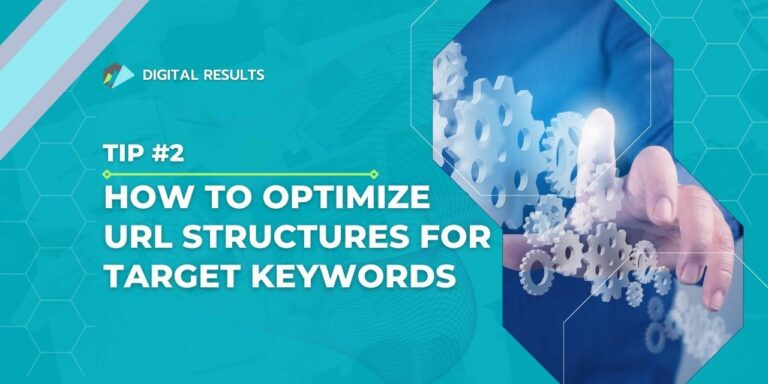
How Design and User Experience Matter to SEO
What is User Experience Design and Why Does it Matter?
User experience (UX) design refers to the overall experience that a person has when interacting with a product or service. In marketing, UX is important because it directly impacts customer satisfaction, loyalty, and ultimately, business success. A positive user experience can lead to increased engagement, higher conversion rates, and positive word-of-mouth marketing. By prioritizing UX, businesses can create a competitive advantage and drive growth through customer satisfaction and loyalty.

Why UX Design and SEO are Important Together
Search engines, like Google, prioritize websites that offer a great user experience. If your website provides a positive user experience, visitors are likely to stay longer, engage with your content, and share your website. Search engines use this data to determine the quality of your website and its relevance to a user’s search query.
Additionally, search engines use various metrics to determine a website’s search engines ranking, such as bounce rate, time on site, and pages per session. Therefore, a poorly designed website or a website with a poor user experience can lead to high bounce rates, low time on site, and fewer pages per session, negatively impacting your website’s search engine ranking.
Steps for Implementing UX and Design to Optimize for SEO
At Digital Results, we work with our clients to optimize their websites for search engine optimization (SEO); we have a team of experts who provide a wealth of knowledge and experience. These are steps we consider when optimizing a website for UX and SEO.
1. Site Speed
Site speed is one of the most critical factors that affect both UX and SEO. A slow-loading website can lead to a poor user experience, causing visitors to leave the site quickly. Additionally, search engines prioritize fast-loading websites as they provide a better user experience.
To improve your website’s site speed, consider implementing the following:
- Compress large images: Large images can slow your website’s loading time. Ensure your images are compressed to reduce their file size without compromising quality.
- Optimize your code: Your website’s code can impact its loading time. Minimize your CSS and JavaScript files to reduce the size and improve your website’s loading speed.
- Use a content delivery network (CDN): A CDN can help distribute your website’s content across multiple servers globally, improving your website’s loading speed for visitors across the globe.

2. Mobile-Friendly Design
With more people accessing the internet through their mobile devices than ever, a mobile-friendly website design is essential. In addition, search engines prioritize mobile-friendly websites, so optimizing your website’s design for mobile devices is crucial for both User experience design and SEO.
To optimize your website for mobile devices, consider implementing the following:
- Use responsive design: Responsive design automatically adjusts your website’s layout to fit the screen size of the device it’s being viewed on.
- Optimize your images for mobile: Optimize your images for mobile devices to ensure they load quickly and look great on smaller screens.
- Use legible fonts: Use readable fonts that are easily read on smaller screens.
3. Site Navigation
Good site navigation helps users find what they’re looking for quickly and easily. Search engines also take site navigation into account when ranking websites. A well-designed website with a clear and intuitive navigation structure makes it easier for search engines to crawl and index your site’s content, ultimately leading to better SEO results.
To improve your website’s navigation, consider implementing the following:
- Use a clear menu structure: It makes it easy for visitors to find what they’re looking for.
- Use internal links: Use internal links to connect related content and help visitors navigate your website.
- Implement breadcrumbs: Breadcrumbs help visitors navigate your website by providing them with links that show their current location on your website.
4. Content and UX

Great content is essential for SEO, but it’s equally important to ensure that your content is presented in a way that is easy to read and understand for your website visitors. A positive user experience can increase the time visitors spend on your website and lower your bounce rate, ultimately improving your website’s search engine ranking.
To improve your website’s content and user experience, consider implementing the following:
- Use clear and concise language: Use language that is easy to understand and avoids technical jargon.
- Use headings and subheadings: Use headings and subheadings to break up your content into easily digestible sections.
- Use bullet points and lists: Use bullet points and lists to make your content easier to scan and read.
- Use high-quality images and videos: High-quality images and videos can help enhance your content and engage visitors.
- Use white space: White space can help make your content more readable and improve your website’s overall design.
5. User Testing
User testing is an essential part of UX and design. Testing your website with real users can provide valuable insights into how visitors use your website, what they find helpful, and what can be improved.
To implement user testing, consider using the following:
- Usability testing: Usability testing involves watching users interact with your website, providing insights into navigating it and what they find challenging or confusing.
- A/B testing: A/B testing involves testing different variations of your website to see which performs better with users.
- Surveys and feedback: Surveys and feedback can provide valuable insights into what users like and dislike about your website and what can be improved.
Prioritizing UX Design and SEO for Website Success

The relationship between UX design and SEO is crucial for a website’s success. By implementing user experience design best practices, such as optimizing site speed, creating high-quality content, and improving site navigation, a website can provide a positive user experience that leads to improved search engine rankings.
Additionally, implementing user testing and gathering feedback can help identify areas of a website that can be improved for a better user experience. Working with an agency like Digital Results can bring expertise and resources to your business and provide a fresh perspective to optimize your website’s UX design and SEO. By prioritizing UX design and SEO, companies can achieve tremendous success online.
Why Work with a Marketing Agency for UX Design and SEO?
Working with a marketing agency for User Experience design and SEO can bring a wealth of expertise and resources to your business. Agencies can provide a team of professionals specializing in UX design and SEO and have experience working with various companies and industries. Additionally, agencies can offer a fresh perspective, identify new growth opportunities, and provide access to tools and technologies that may not be available in-house.
Ready to Grow Your Search Engine Results?
Let Digital Results assist you in your SEO strategy and help
deliver the search engine results you need.






